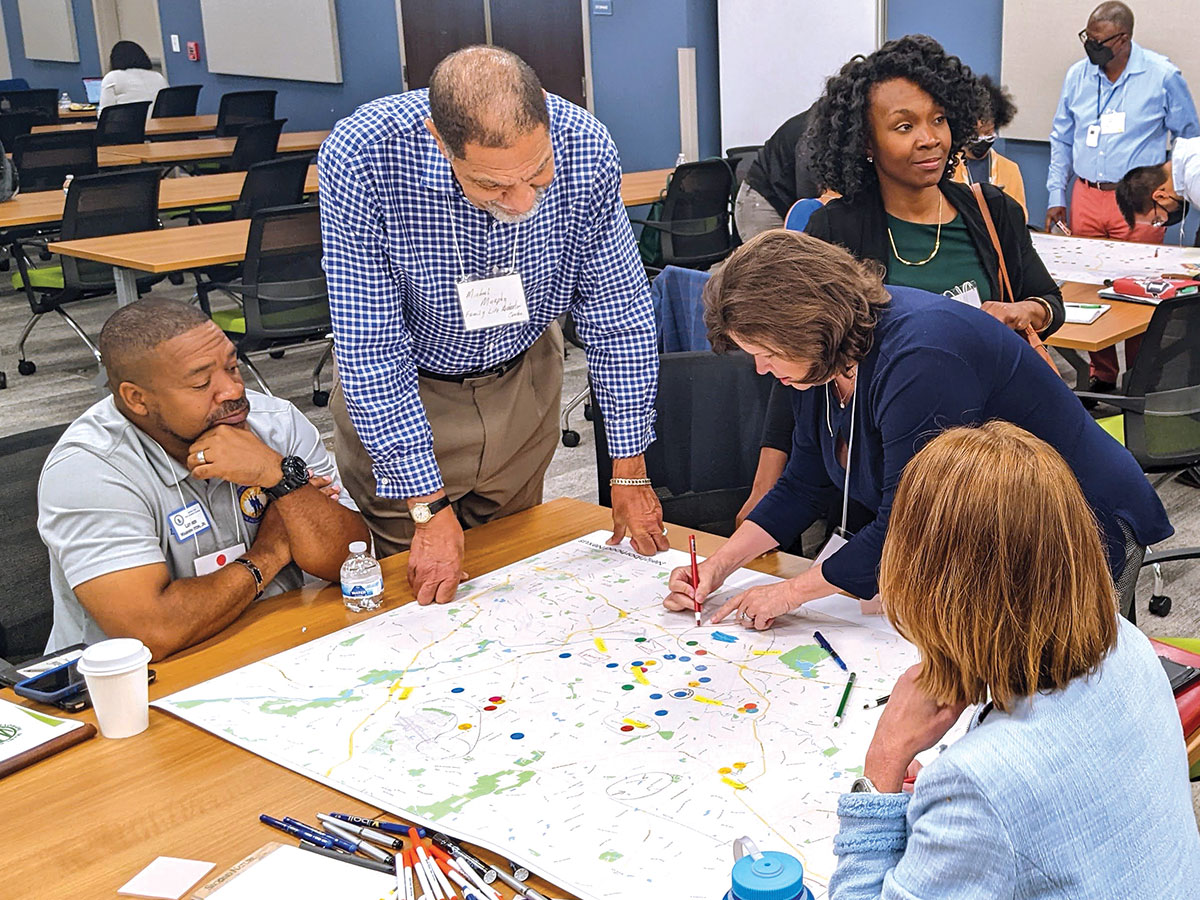Narrow the Power Gap: Deeper impact through mutual trust, respect, transparency, and partnerships

About a year ago, I was asked to present to an association of grant writers about current trends in philanthropy. I talked a great deal about the importance of respectful and trusting relationships, and how grantmakers are recognizing that true, long-term impact requires developing partnerships with grantees. More listening and less dictating. More grace and less punishment. More transparency, humility, and genuine engagement of diverse perspectives to spark meaningful collaboration, mutual understanding, and positive change.
One of the attendees asked me, “How do we as grantees start to build that trusting relationship with our funders?” And my honest answer was, “You can’t. Change in philanthropy cannot come from the outside. It must come from within.” The cycle of trust- and relationship-building must begin where the power currently resides – with grantmakers.
This week, PEAK Grantmaking has released a robust set of resources designed to help grantmakers operationalize the second of our five Principles for Peak Grantmaking: Narrow the Power Gap.
Our work focuses on the “how” of designing policies, processes, systems, and structures throughout the grantmaking process that move the traditional power imbalance toward equilibrium. Many of the elements included in these new resources have their origin in Project Streamline. We’ve updated these resources and aligned them with our new initiative to talk clearly about the power gap between grantees and grantmakers.
Streamlining and more efficient processes are helpful, but when these goals are tied to organization-wide values related to partnership, trust, openness, and responsiveness, they become even more powerful.
We have developed three recommendations for grantmakers looking to narrow the power gap.
Recommendation #1:
Build strong and trusting relationships with your grantees.
Redefining the power balance in philanthropy starts with grantmakers making a concerted effort to build stronger and more trusting relationships with grantees — relationships that are true partnerships in which the opinions, ideas, and needs of both parties are heard and considered whenever decisions are made.
Respectful and trusting grantmaker-grantee relationships are based on transparency, responsiveness, accessibility, collecting, and acting on grantee feedback, and ensuring that grantmaker systems and processes are designed to support grantees and not work against them.
Recommendation #2:
Rightsize the grantmaking process and implement flexible practices to reduce the time and financial burdens on your grantees.
Time is money. In the nonprofit sector, time is also capacity. When you reduce the amount of time your grantseekers and grantees spend applying for and reporting on grants, you build their capacity to do what they exist to do – make an impact. When you design practices that reflect your respect for grantseeker and grantee time you also build trust.
Effective grantmakers take an intentional look at their practices and ask critical questions about how to reduce the burden on their grantees. They “rightsize” their process based on their past relationship with a grantee, the size and purpose of the grant, and what information they truly use to make decisions.
Recommendation #3:
Structure grant awards to be more responsive to grantseeker needs.
Across the sector, there is a disconnect between what grantmakers are willing to fund and what grantees truly need most to make an impact. Because of the traditional power imbalance, grantees are rarely willing or able to tell their funders what they actually need.
Effective grantmakers understand what their grantees need and structure their grant awards accordingly, including funding operating support, advocacy work, capacity-building and multi-year grants, and providing flexibility in grant terms to help their grantees adapt to change that will inevitably come.
How you can lead the way
To help your organization ask and answer these key questions about power, explore our new suite of Narrow the Power Gap resources.
Start by downloading our Action Planner: Strategies for Narrowing the Power Gap. Then, RSVP for our March 20 webinar, where we’ll explore what it means to Narrow the Power Gap and how PEAK Grantmaking can help you do it.
PEAK Grantmaking members have access to two new case stories of organizations who are doing this work well; and, exclusive to our Organization Members, we’ve developed five how-to guides providing roadmaps to put this principle into practice. (Not a member? Join us!)
Many of our colleagues in philanthropy-serving organizations across the country have demonstrated exceptional thought leadership around power in the philanthropic sector. We encourage you to engage with this work by visiting our Sector Resources page.


